Side Menu:
Fourth Officer Joseph Boxhall
- Damage Inspection
A unique part of Boxhall's role aboard Titanic is that not only was he on duty at the time of the collision, but he is the only surviving officer to have inspected the damage on the lower decks - twice.
11:41pm: F deck Inspection: No damage
While First Officer Murdoch and Captain Smith were on the starboard wing bridge discussing the collision, Boxhall, on his own initiative ("nobody told me to go." - BBC, 1962), decides to go forward and inspect any possible damage himself:
"I went right down below, in the lowest steerage, as far as I could possibly get without going into the cargo portion of the ship, and inspected all the decks as I came up, in the vicinity of where I thought she had struck... I found no damage. I found no indications to show that the ship had damaged herself…On the inside… I went down to the steerage….I looked in all the decks. I worked my way up to the top deck…In the forward part of the ship; that is, abreast of No. 2 and 3 hatches. " (US Inquiry)
While in the steerage area he also noted that there were no port holes open: "The ports I saw down below in the steerage, when I first visited down there a few moments after the ship struck, to the best of my memory were closed. That was in the fore part of the ship, between the forecastle head and the bridge. Those ports, to the best of my memory, were closed. " (US Inquiry)
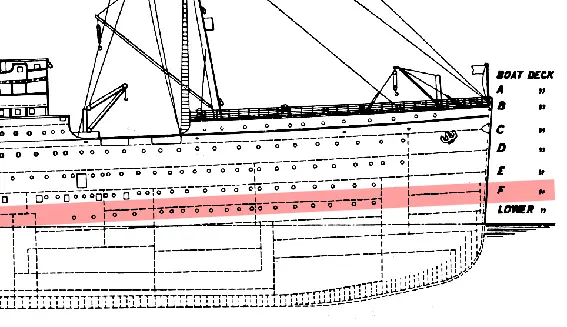
Titanic's F deck - location highlighted.
In the British Inquiry he was more specific, detailing how he got there:
"Through a staircase under the port side of the forecastle head which takes me down into D deck, and then walked along aft along D deck to just underneath the bridge, and down the staircase there on the port side, and then I am down on E deck near E deck doors, the working alleyway; and then you cross over to the starboard side of E deck and go down another accommodation staircase on to F deck. I am not sure whether I went lower. Anyhow, I went as low as I could possibly get." (British Inquiry)
Boxhall later described also encountering some passengers enroute, saying that he "went down into the steerage section beneath the fo'c'sle head to find out if any damage had been done. Pushing through the steerage passengers who were now streaming upwards, he went down several decks, but could find no signs of water coming in." ("A Talk by the Fourth Officer of the Titanic", May 1959 The Nautical Magazine, pages 262 - 264)
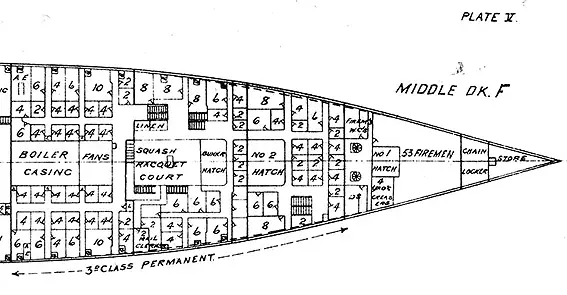
Titanic's F deck plan - Boxhall investigated the forward starboard (right) side of this location.
In 1962 he elaborated on this:
"You had to go down about four bridge ladders, you see. And I went forward to the entrance of the third class, these Third Class Passengers these southern European people were streaming up on deck… and I went down below I think it was two decks down as low as I could go without removing any hatches or anything. I went down to the Third Class and crossed over to the Starboard Side and I walked along there and looked in the cross passages. I couldn't hear any noise, I couldn't see any damage. " (1962 BBC radio broadcast)
He also noted that it was F deck, the lowest deck possible to reach: "I went down forward, down into the third class accommodation, right forward on to the lowest deck of all with passenger accommodation, and walked along these looking for damage…. Yes, F deck. I walked along there for a little distance just about where I thought she had struck…it was the lowest deck I could get to without going into the cargo space…I did not see any damage whatever." (British Inquiry)
Boxhall then "came up the same way as I went down." (British Inquiry) but on the way, on C deck, he did come across some evidence - in the form of ice:
I took a piece of ice out of a man’s hand, a small piece about as large as a small basin, I suppose; very small, anyhow; about that size (Describing.) He was going down again to the passenger accommodation, and I took it from him and walked across the deck to see where he got it. I found just a little ice in the well deck covering a space of about three or four feet from the bulwarks right along the well deck, small stuff. (British Inquiry)
In 1962 he later noted that this person was not English and that he saw a "powdering of ice":
As I was emerging on the deck some of these men were on their way back again to their beds. And there was one man had a piece of ice and I took it away out of his hands wondering where he got it from. And I spoke to him in English and tried to make him understand that there was nothing the matter. Go down and go to bed and go to sleep again, you see. And I took this piece of ice and walked along the upper deck on the Starboard side to see where the ice came from and there just inside of the ship's rail there was a powdering of ice, running along as though she'd compressed it. There was no wind you see, and it would fall inboard. (BBC, 1962)
Boxhall now returned to the bridge and "reported to the captain that I could not see any damage." (US Inquiry). In response the Captain said "Go down and find the carpenter and get him to sound the ship." (US Inquiry). "I think we stayed on the bridge just for a moment or two, probably a couple of minutes, and then he told me to find the carpenter and tell him to sound the ship forward." (British Inquiry)
He later recalled the conversation in more detail:
I came up on to the bridge again and reported to the Captain, I've been down below, sir, right down as far as I can go without removing hatches or the tarpaulin or anything, right through the Third Class accommodation forward and I don't see any signs of any damage, not even a glass port broken.” He said, “Did you see the Carpenter anywhere, Mr. Boxhall?” I said, “No, sir, I didn't.” He said, “I do wish you'd go down and find him, and tell him to sound the ship round forward and let me know right away.” (1962, BBC)
In his 1959 talk, he also added that the Captain told him "to find the carpenter and sound the bilges" ("A Talk by the Fourth Officer of the Titanic", May 1959, The Nautical Magazine, pages 262 - 264). Bilges are normally the lowest compartment on a ship, on either side of the keel and normally there is some water found aboard almost every vessel. So perhaps the Captain was asking Boxhall to check if there were any differences in the amount of water, due to a 'grounding' on the iceberg.
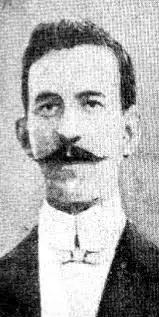
29-year old Ship's Carpenter
John Maxwell told Boxhall
the ship is "making water fast."
Boxhall acts just as the Captain ordered and was "proceeding down, but I met the carpenter... I said, "The captain wants you to sound the ship." He said, "The ship is making water," and he went on the bridge to the captain" (US Inquiry). Boxhall met the carpenter "on the ladder leading from the bridge down to A deck, and he wanted to know where the Captain was. I told him he was on the bridge.. he said the ship was making water fast, and he passed it on to the bridge." (British Inquiry).
In 1962 he adds further details, such as the Carpenter, who would have been 29 year old Ship's Carpenter John Maxwell, being out of breath:
Well I didn't get down all the ladders down to the Fore Deck, when I met the Carpenter coming up, absolutely out of breath, and he said “Mr. Boxhall,” he said, “the Forepeak Hatch has blown off and number one tarpaulin is ballooning up.” He said, “She's evidently making water fast." So I said, "Alright, go up to the Captain he is on the starboard wing of the bridge and tell the Captain.” (1962, BBC)
11:50pm Inspection 2: Mail room flooding
Based on Ship's Carpenter John Maxwell's report Boxhall decides to go on a second inspection "with the intention of finding out where the water was coming in" (British Inquiry):
"I thought I would go down forward again and investigate; and then I met a mail clerk, a man named Smith, and he asked where the captain was. I said, "He is on the bridge." He said, "The mail hold is full" or "filling rapidly." I said, "Well, you go and report it to the captain and I will go down and see," and I proceeded right down into the mail room…. I went down as far as the sorting room deck and found mail clerks down there working… Taking letters out of the racks, they seemed to me to be doing… I could not see what they were putting them in… I looked through an open door and saw these men working at the racks, and directly beneath me was the mail hold, and the water seemed to be then within 2 feet of the deck we were standing on… And bags of mail floating about.. I did not see water coming in. I said I could hear the water coming in. . I was standing in the sorting room, and the water was just then within two feet of this deck I was standing on. I could see it through the opening in the staircase which led down to the lower place." (US Inquiry)
At the British Inquiry he added some further details, such as taking the same route as is in the previous inspection but being blocked by a watertight door:
I met one of the mail clerks, a man of the name of Smith… He also asked for the Captain, and said the mail hold was filling. I told him where he could find the Captain and I went down to the mail-room. I went down the same way as I did when I visited the third class accommodation previously. I went down as far as E deck and went to the starboard alleyway on E deck and the watertight door stopped me getting through… Then I crossed over and went into the working alleyway and so into the mail-room… I went down in the mail-room and found the water was within a couple of feet of G deck, the deck I was standing on… It was rising rapidly up the ladder and I could hear it rushing in. I stayed there just for a minute or two and had a look. I saw mail-bags floating around on deck. I saw it was no use trying to get them out." (British Inquiry)
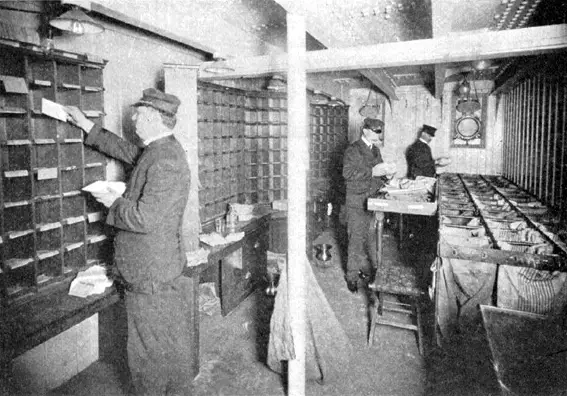
The RMS Oceanic's mailroom. Royal Mail had to approve the installation so this is likely what Titanic's looked like.
According to his 1962 description, on his way to the mailroom he also saw Titanic's band tuning up and tried to rescue a mail bag:
I didn't get down to the Fore Deck because I met the mail clerk coming up, and he said, “Mr. Boxhall, the Mail Room is filling.” So I said, “Oh, carry on, and you'll find the Captain on the Starboard Wing of the Bridge and report to him.” I said, “I'll go down there and have a look.” So I continued on my way down to the Mail Room. I tried to go into the First Class entrance from that lower deck, from the fore deck, but they got the watertight door closed and I had to come up all these ladders and go up on the Promenade Deck and then down through the Main Saloon Entrance, where I found the band was tuning up. And I got the way down to the Mail Room and got down as far as the Sorting Room, and all the mail clerks was there pulling letters out of the racks, and I was standing on the top of a companionway from the Sorting Room down to the Handling Room, and I saw a bag floating by. I instinctively stooped down to try and pick it up; I just couldn't reach it. I realised then that it was serious. So I started to come back again. (1962, BBC)
Of the 5 postmen trying to save 3,364 sacks of post, none survived.
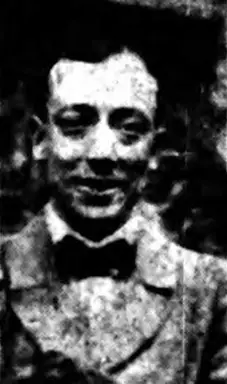
George Dodd, second senior steward
suggested to Boxhall about sending
men down to help with the mail
On his way back to report what he had seen Boxhall "met the Second Steward, Mr. Dodd, on my way to the bridge - as a matter of fact in the saloon companion way - and he asked me about sending men down below for those mails. I said 'You had better wait till I go to the bridge and find what we can do.' ” (British Inquiry). He apparently met Dodd when he got "to the First Class Passenger Accommodations, I met one of the assistant stewards and he said, “Mr. Boxhall, shall I send some men down there?” and I said, “I think you'd better not. I'll go up and report this to the bridge, and we'll send down and let you know.” (1962, BBC)
After this conversation with Dodd in First Class, Boxhall then returns to the bridge and "came up through the top lounge, where the band was, they were playing Alexander's Ragtime Band. (1962, BBC)
At the bridge, Boxhall tells Captain Smith: “The Mail Room is filling, sir" (BBC interview October 1962) and the Captain responds to Boxhall's report by saying "all right" (US Inquiry). At that Captain Smith "walked away and left me. He went off the bridge, as far as I remember." (British Inquiry) "and then the order came out for the boats. " (US Inquiry), "the captain ordered him to call out all hands and prepare the boats for lowering." ("A Talk by the Fourth Officer of the Titanic", May 1959, Nautical Magazine, pages 262 - 264)
12:00am Calls Off-duty Officers
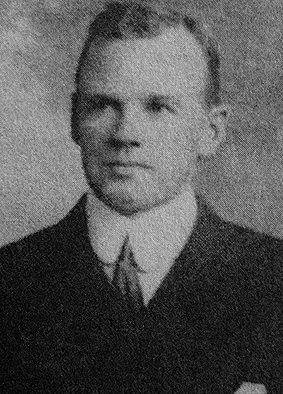
Second Officer Lightoller said Boxhall came
into his cabin and quietly remarked “You know
we have struck an iceberg.”
According to his British Inquiry testimony, after reporting to the Captain about the mail room Boxhall's next duty was to call the other officers who were at that point still off duty: "That was after I reported to the Captain about the mail-room…approximately 20 minutes to half an hour [after impact]. " (British Inquiry)
Most likely the first officer he called was Chief Officer Wilde, whose cabin was the first he would have encountered as he walked down the officer's corridor, followed by Second officer Lightoller:
Lightoller: I did not think it was half an hour, but we have been talking this matter over a very great deal, and I judge it is half an hour, because it was Mr. Boxhall who came to inform me afterwards we had struck ice, and previous to him coming to inform me, as you will find out in his evidence, he had been a considerable way round the ship on various duties which must have taken him a good while. It might be less, it might be a quarter-of-an-hour. You will be able to form your judgment... He just came in and quietly remarked “You know we have struck an iceberg.” I said “I know we have struck something.” He then said “The water is up to F Deck in the mail room."… He had no need to say anything further then. (British Inquiry).
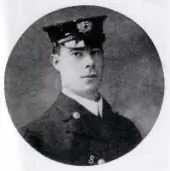
Fifth officer Lowe did not
hear Boxhall's wake up,
saying "when we sleep we die."
Next was Third officer Pitman, who was in his cabin smoking a pipe: "When I was partly dressed Mr. Boxhall came in and said the mail room - there was water in the mail room. I said, 'What happened?' He said, 'We struck an iceberg.' (US Inquiry).
The only other officer off-duty was Lowe, who unlike Lightoller and Pitman who had both been disturbed by the collision, was still fast asleep and did not remember Boxhall calling him: "Mr. Boxhall, the fourth officer, he told me that we had struck an iceberg, but I do not remember it... It must have been while I was asleep. You must remember that we do not have any too much sleep and therefore when we sleep we die." (US Inquiry)
After calling the four off-duty officers Boxhall "went towards the bridge, I am not sure whether it was then that I heard the order given to clear the boats or unlace the covers. I might have been on the bridge for a few minutes and then heard this order given." (British Inquiry)
12:10am Clearing Lifeboats, Lamps and Thomas Andrews
Captain Smith gave the order to "clear the lifeboats" so Boxhall "went around the decks and was clearing the lifeboats; helping take the covers off… and clearing them generally... and assisting generally around the decks." (US Inquiry)
Boxhall helped clear the boats on the port side: " I went right along the line of boats and I saw the men starting, the watch on deck, our watch….I went along the port side, and afterwards I was down the starboard side as well but for how long I cannot remember. I was unlacing covers on the port side myself and I saw a lot of men come along - the watch I presume. They started to screw some out on the afterpart of the port side; I was just going along there and seeing all the men were well established with their work, well under way with it," (British Inquiry)
Boxhall had an assigned lifeboat on the starboard side - "For emergency purposes I was assigned to No. 1 as a matter of fact, the starboard boat." (British Inquiry). The two emergency lifeboats, numbers 1 and 2, had lamps - "They are lighted every night at 6 o’clock… I do not think they were exactly in the boat. They were hanging in the wheelhouse or in the bridge, covered over with a canvas cover - not exactly in the boat." (British Inquiry)
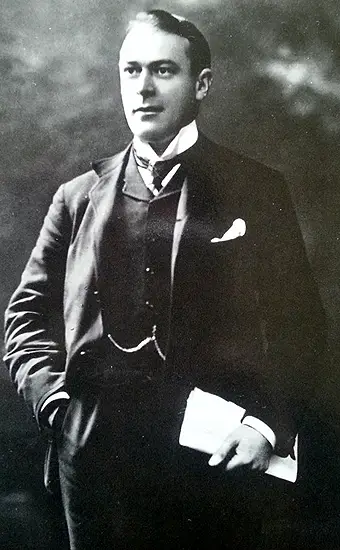
According to Boxhall, Thomas Andrews told Captain
Smith Titanic had "an hour to an hour and a half" left.
However in discussion with Chief officer Wilde, Boxhall noted that all the other lifeboats were without lamps. "It was through my speaking to the Chief Officer about it. I mentioned to him that there were no lamps. That was earlier on, when they started to clear the boats. I mentioned to him the fact that there were no lamps in any of the boats, or compasses, and he told me to get hold of the lamp trimmer.. The Chief Officer told me to find the lamp trimmer. I did find him after a little trouble. I really forget where I found him. He was on the boat deck working amongst the men. I told him to take a couple of men down with him and fetch the lamps, and he was afterwards seen to bring the lamps along the deck and put them in the boats." (British Inquiry)
After clearing the boats Boxhall then had a conversation with Captain Smith in which he related Thomas Andrew's prognosis of doom: "The Captain did remark something to me in the earlier part of the evening after the order had been given to clear the boats. I encountered him when reporting something to him, or something, and he was inquiring about the men going on with the work, and I said, “Yes, they are carrying on all right.” I said, “Is it really serious?” He said, “Mr. Andrews tells me he gives her from an hour to an hour and a half.” That must have been some little time afterwards. Evidently Mr. Andrews had been down." (British Inquiry)